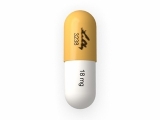Medication inventory retail pharmacy
As a retail pharmacy, effectively managing your medication inventory is crucial for providing quality patient care, optimizing workflow efficiency, and maximizing profitability. With the increasing demand for pharmaceutical products and the need to maintain accurate stock levels, implementing effective inventory management strategies is essential. Here are some valuable tips to help retail pharmacies effectively manage their medication inventory.
1. Conduct Regular Inventory Audits
Regular inventory audits are essential for maintaining accurate stock levels and minimizing the risk of overstocking or understocking medications. Schedule routine audits to reconcile physical inventory counts with your digital records. This will help identify discrepancies and ensure that your inventory is up to date.
2. Optimize Inventory Organization
Efficiently organizing your medication inventory can greatly enhance workflow efficiency. Categorize medications by type, usage, or therapeutic class to make it easier for pharmacy staff to locate specific products quickly. Utilize shelving units, storage bins, and labels to ensure that your inventory is well-organized and easily accessible.
3. Implement a Robust Inventory Management System
Investing in a reliable inventory management system can streamline your medication inventory management processes. These systems can track stock levels, generate automated reorder notifications, and provide valuable insights into medication usage patterns. Choose a system that suits the specific needs and size of your pharmacy.
4. Monitor Expiration Dates
Expired medications can lead to potential risks for patients and can also result in financial losses for your pharmacy. Regularly monitor expiration dates and remove any expired medications from your inventory promptly. Implement a first-in, first-out (FIFO) method to ensure that medications with the shortest expiration dates are dispensed first.
5. Collaborate with Suppliers
Building strong relationships with your medication suppliers can benefit your pharmacy in many ways. Communicate regularly with your suppliers to stay informed about new products, availability, and pricing. Collaborate to negotiate favorable terms and conditions, such as flexible payment options or volume discounts, to optimize your medication inventory management.
Efficient medication inventory management is critical for the success of retail pharmacies. By conducting regular audits, optimizing organization, utilizing robust inventory management systems, monitoring expiration dates, and collaborating with suppliers, pharmacies can ensure accurate stock levels, improve workflow efficiency, and provide optimal patient care.
Importance of managing medication inventory
The management of medication inventory is a crucial aspect of operations for retail pharmacies. Maintaining an accurate and up-to-date inventory is essential for ensuring the availability of necessary medications for patients and preventing stockouts.
Optimized customer service: By effectively managing medication inventory, retail pharmacies can provide better and more reliable customer service. Patients rely on pharmacies to have the medications they need in stock, and proper inventory management ensures that the right medications are readily available.
Preventing stockouts and backorders:
Accurate medication inventory management helps prevent stockouts, where a medication is temporarily unavailable due to insufficient stock. Stockouts can lead to frustration for patients, who may have to visit multiple pharmacies in search of their prescribed medication. Additionally, backorders can result in delayed fulfillment of prescriptions, causing inconvenience for both patients and healthcare providers.
Reducing wastage and expiration:
Effective inventory management helps reduce wastage and expiration of medications. With proper tracking and monitoring, pharmacies can prevent medications from expiring before they are utilized. This reduces financial losses and ensures that medications are utilized efficiently.
Cost savings:
By optimizing medication inventory management, retail pharmacies can reduce carrying costs associated with excess inventory. Carrying costs include expenses such as storage, insurance, and capital tied up in inventory. By accurately tracking medication usage and demand patterns, pharmacies can avoid overstocking and minimize these costs.
In conclusion, maintaining an accurate and well-managed medication inventory is crucial for retail pharmacies. It ensures better customer service, prevents stockouts and backorders, reduces wastage and expiration, and leads to cost savings. Investing in proper inventory management systems and processes can greatly benefit both the pharmacy and its patients.
Tips for Retail Pharmacies
1. Keep a Detailed Inventory
One of the most important tips for retail pharmacies is to keep a detailed inventory of all medications. This includes tracking the quantities, expiration dates, and reorder points for each item in stock. By maintaining an accurate record, you can easily identify which medications need to be restocked and avoid running out of essential drugs.
2. Utilize a Barcode System
Implementing a barcode system in your pharmacy can greatly streamline the inventory management process. By scanning barcodes, you can quickly track medications, update quantities, and ensure accurate stock levels. This helps to reduce errors and save time by eliminating the need for manual data entry.
3. Set Up Automatic Reordering
To prevent running out of medications, set up automatic reordering for regularly stocked items. This can be done by establishing relationships with reliable wholesale suppliers who offer automatic replenishment services. By automating the reordering process, you can ensure that your pharmacy always has an adequate supply of essential medications.
4. Conduct Regular Audits
Regularly conducting audits of your medication inventory is crucial for identifying any discrepancies or issues. Schedule periodic audits to count your stock, compare it to your recorded inventory, and investigate any discrepancies. This will help identify potential areas of improvement, such as addressing issues with theft, expired medications, or inaccurate record-keeping.
5. Train Staff on Inventory Management
Properly training your staff on inventory management is essential for maintaining an efficient pharmacy operation. Ensure that your team is well-versed in inventory tracking systems, barcode scanning procedures, and the importance of accurate record-keeping. This will help minimize errors, improve inventory accuracy, and optimize the overall management of your medication stock.
By implementing these tips for retail pharmacies, you can effectively manage your medication inventory and ensure that your pharmacy operates smoothly, minimizing the risk of medication shortages and improving the overall customer experience.
Utilize inventory management software
One of the most effective ways to manage medication inventory in a retail pharmacy is to utilize inventory management software. This software is specifically designed to track and monitor the inventory levels of various medications, ensuring that you always have the necessary stock on hand.
With inventory management software, you can easily create a comprehensive database of all the medications in your pharmacy. This includes information such as the medication name, dosage, expiry date, and quantity available. The software will automatically update this database as medications are received or dispensed.
By using inventory management software, you can generate real-time reports that provide valuable insights into your medication inventory. These reports can help you identify trends, such as which medications are selling quickly or which ones are not moving as fast. This information can help you make informed decisions about purchasing and restocking medications.
Additionally, inventory management software can help you set up automatic reorder points for medications that are frequently dispensed. This ensures that you never run out of stock for high-demand medications, preventing unnecessary delays for your customers.
In conclusion, utilizing inventory management software is a crucial tool for any retail pharmacy looking to effectively manage their medication inventory. With its ability to track and monitor stock levels, generate valuable reports, and set up automatic reorder points, this software can greatly streamline your pharmacy operations and improve customer satisfaction.
Create a system for tracking expiration dates
One of the most important aspects of managing medication inventory is ensuring that medications are used before their expiration dates. To prevent the sale and use of expired medications, it is crucial to have a reliable system in place for tracking expiration dates.
Implement a clear labeling system: Label each medication with its expiration date prominently displayed. This will make it easy for pharmacy staff to identify and prioritize medications that are nearing their expiration dates.
Utilize a computerized tracking system: Use a pharmacy management software that includes a feature for tracking expiration dates. By entering the expiration dates into the system, you can generate reports to identify medications that are approaching their expiration dates.
Establish a regular stock rotation schedule: Regularly check the medication inventory and rotate the stock so that medications with the closest expiration dates are placed in front. This ensures that the oldest medications are used first and helps to prevent the sale of expired medications.
Train pharmacy staff on proper inventory management: Provide training to your pharmacy staff on the importance of tracking expiration dates and how to use the tracking system effectively. This will help ensure that everyone is on the same page and following the established procedures.
Conduct regular inventory audits: Regularly conduct audits to verify the accuracy of your inventory and check for any expired medications. This will help you identify any areas for improvement and make necessary adjustments to your inventory management system.
Implement automated replenishment
One of the most effective ways to manage medication inventory in retail pharmacies is to implement automated replenishment systems. These systems use advanced technology and algorithms to track inventory levels and automatically reorder medications when they reach a certain threshold.
By implementing automated replenishment, retail pharmacies can eliminate the need for manual inventory management and reduce the risk of stockouts or expired medications. The system can also help optimize inventory levels, ensuring that medications are always available to meet customer demands without excess stock.
Automated replenishment systems can integrate with pharmacy management software, allowing for seamless inventory tracking and reordering. This eliminates the need for pharmacists and staff to spend valuable time manually counting and ordering medications, freeing them up to focus on providing excellent patient care.
Furthermore, these systems can generate reports and analytics on medication usage and trends, helping retail pharmacies better understand their inventory needs and make informed decisions about purchasing and stocking medications. They can also help identify slow-moving medications that may require additional marketing efforts or adjustments to pricing strategies.
Overall, implementing an automated replenishment system can greatly streamline medication inventory management in retail pharmacies, improving efficiency, reducing costs, and ensuring that patients always have access to the medications they need.
Optimize inventory layout and organization
A clear and efficient inventory layout
Having a well-organized inventory layout is essential for managing medication inventory in a retail pharmacy. Optimize your inventory layout by arranging medications in a logical and systematic manner. Group medications according to their therapeutic class, dosage form, or brand name to make it easier for your staff to locate and restock items. Consider using shelving or cabinets with clear labels and signage to ensure that each medication is easily identifiable.
Utilize inventory management software
Investing in inventory management software can greatly optimize the layout and organization of your medication inventory. This software allows you to digitally track and manage medication stock levels, expiration dates, and reorder points. With the help of inventory management software, you can easily generate reports and alerts to ensure that your inventory is always up to date and properly organized.
Create a standardized inventory system
Developing a standardized inventory system is key to optimizing layout and organization. Establish clear guidelines and procedures for managing medication inventory, including protocols for receiving, stocking, and rotating stock. By implementing a standardized system, you can streamline inventory processes and reduce the chances of errors, such as misplacing or overstocking medications.
Regularly review and update inventory
To maintain an optimized inventory layout and organization, it is important to regularly review and update your inventory. Conduct frequent audits to identify any expired or soon-to-expire medications that need to be removed from stock. Additionally, analyze sales data and customer demand to adjust stock levels and optimize the arrangement of medications to meet customer needs.
In conclusion, optimizing the layout and organization of your medication inventory is crucial for the efficient operation of a retail pharmacy. By implementing clear and efficient inventory management practices, investing in software, and maintaining a standardized inventory system, you can ensure that your pharmacy is well-equipped to meet the needs of your customers while minimizing errors and wastage.
Regularly conduct inventory audits
One important step in managing medication inventory for retail pharmacies is to regularly conduct inventory audits. By conducting regular audits, pharmacies are able to track and monitor their inventory levels, ensuring that medications are properly stocked and readily available for customers.
During an inventory audit, pharmacists can compare the physical stock of medications with the recorded inventory levels in their system. This helps identify any discrepancies or issues, such as expired medications or instances of theft or loss. By identifying and addressing these issues promptly, pharmacies can ensure the accuracy and integrity of their inventory.
To conduct a thorough inventory audit, pharmacies should establish a clear process and schedule for conducting audits. This may involve conducting audits on a monthly or quarterly basis, depending on the size and volume of the pharmacy. Pharmacists should also utilize technology, such as barcode scanners or inventory management systems, to streamline the auditing process and improve accuracy.
Additionally, pharmacies should consider implementing a cycle counting system, which involves counting a portion of the inventory on a regular basis. This allows the pharmacy to continuously monitor inventory levels and identify any issues before they become larger problems. By incorporating a cycle counting system into their inventory management practices, pharmacies can maintain more accurate and up-to-date inventory records.
Follow us on Twitter @Pharmaceuticals #Pharmacy
Subscribe on YouTube @PharmaceuticalsYouTube





Be the first to comment on "Medication inventory retail pharmacy"